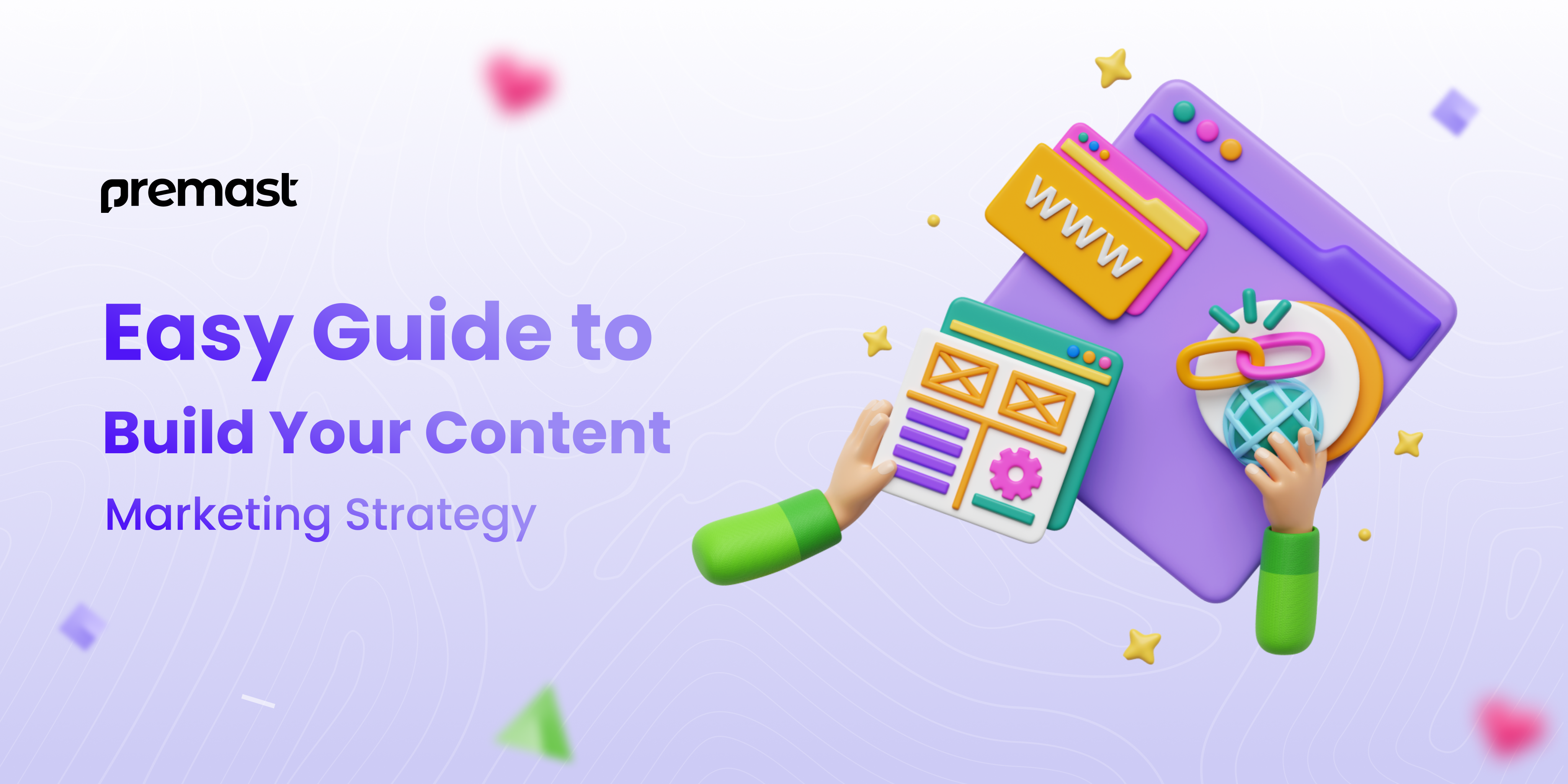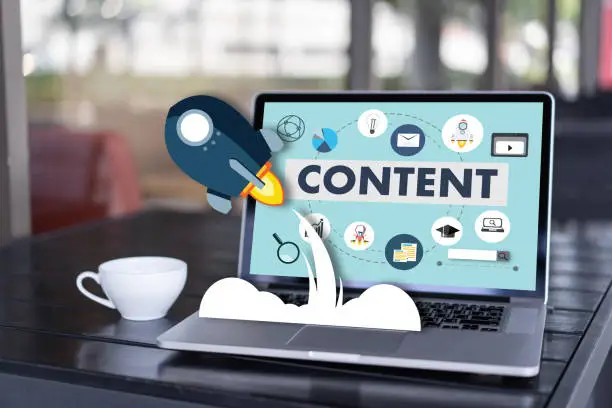Guides
Guide to Build Your Content Marketing Strategy

Content marketing plays a crucial role for businesses aiming to establish meaningful connections with their audience. It involves creating valuable and relevant content that resonates with the audience and ultimately converts them into customers.
In essence, content marketing allows brands to share compelling stories that captivate both potential and existing customers. It serves as a preview of what your business offers, building trust before any financial commitment. The most effective content and strategies will depend on your business’s unique needs and goals.
This guide is designed to provide a comprehensive overview of leveraging content marketing effectively for your business objectives. We will explore essential elements of a successful content marketing strategy, share proven techniques to enhance your efforts, and provide real-world examples to inspire your campaigns.
What is Content Marketing?
Content marketing is a powerful digital strategy focused on creating and sharing valuable, relevant, and consistent content to attract and engage a specific audience. Instead of pushing products directly like traditional advertising, content marketing builds trust and long-term relationships by delivering helpful and informative content that meets the audience’s needs.
The main goal is to connect with potential customers, position the brand as an industry leader, and guide users through each stage of the buyer’s journey from awareness to decision-making. By offering high-quality content that educates, solves problems, or entertains, businesses can increase online visibility, boost brand awareness, improve customer loyalty, and ultimately drive more conversions and sales.
Content marketing, whether through blog posts, videos, social media, or email newsletters, is essential for growing organic traffic, improving SEO rankings, and delivering real value to your audience.
Types of Content Marketing
Content comes in many forms blog articles, videos, infographics, eBooks, podcasts, and social media posts are just a few examples. No matter the format, most content falls into one or more of these main categories:
-
Helpful Content: Does your content solve a specific problem or answer a popular question? Useful content is often built around high-search-volume keywords and provides real value to the reader. It can also support your product, for example, sharing recipes if you offer a grocery app or kitchen tool.
-
Engaging Content: Entertaining content grabs attention and keeps users watching, reading, or scrolling. Whether it’s a humorous Instagram series or a story-driven video campaign, this type of content encourages shares and builds an emotional connection.
-
Interesting Content: This type includes unique perspectives, fascinating facts, or fresh takes on familiar topics. It can overlap with entertaining content, but it often focuses more on curiosity, novelty, and insight.
-
Timely Content: This includes content tied to specific seasons, events, holidays, or trending topics. Whether it’s a post for the holiday season or coverage of a major industry event, timely content captures interest when it matters most.
Your content may fit more than one of these categories, but when developing a content strategy, it’s smart to choose one main focus, such as usefulness, relevance, or entertainment, to guide your approach and meet your audience’s needs.
How to Write Useful and Relevant Content
Creating valuable content helps your audience find real use in what you share and encourages them to come back for more. For example, if you run a car retail business and publish helpful how-to guides or maintenance tips that show people how to extend the life of their car parts, they’re more likely to visit your website or landing page again.
When your content solves real problems, your audience sees that your brand cares, not just about selling cars, but about supporting their needs. This builds trust and can lead people to explore your site for more tips, and eventually consider buying from you.
To produce relevant content, focus on building a personal connection. Share the story behind your product or service in a way that your audience can relate to. A personal story often sticks with people more than just facts and figures. When your content speaks to your audience’s needs, it builds loyalty and naturally encourages conversions.
Planning Your Content
What is the main goal of your current marketing campaign? Whether you’re aiming to increase email sign-ups, drive more website traffic, or generate buzz around a new product launch, defining your objectives is key. Once your goal is clear, content marketing can become a powerful tool to support it.
Think about leveraging upcoming events like conferences or industry expos, where thousands of potential customers might visit your website or download your content in real time. Identify how content can help you meet your goals. Is it meant to build awareness, drive conversions, or educate your audience?
Understanding your target audience is essential. Know their demographics, behaviors, and content preferences. You might plan a blog series to introduce a new service, only to find your audience prefers engaging video content instead. Make sure your strategy aligns with what they actually want.
While instinct can guide content planning, data is just as important. Use tools like Google’s autocomplete or Answer the Public to discover what your audience is actively searching for. These insights can help shape content that ranks well and delivers real value.
Read More:
-
Why Good Writing Skills Are Important for Remote Work and How to Get Better at Them?
-
Top Content Trends You Shouldn’t Ignore.
-
SEO Basics for Beginners.
Implementation of a Content Strategy
Getting your content noticed and shared starts with choosing the right place to publish it. Where you share your content should align with your main product, service, and overall marketing goals. For instance, if you’re a management consulting firm offering a free ebook to grow your email list, it’s smart to keep that content exclusive to your website. This drives traffic directly to your site and increases the chances of lead generation.
On the other hand, if you’re a clothing brand aiming to boost t-shirt sales using a compelling story, your strategy should be different. Share your content across multiple channels, social media platforms, lifestyle blogs, and fashion websites to maximize reach and attract more customers.
The best platforms for content marketing depend on what you’re creating and who you’re trying to reach. Are you producing educational resources, storytelling videos, or visual ads? Choose distribution channels that match your content type and your audience’s preferences.
Remember, content distribution is constantly evolving with technology and changing user expectations. Stay flexible and adjust your strategy to keep your content performing at its best.
Managing Your Content Marketing Plan
Stay organized and maximize your content marketing success with a content calendar. A well-planned editorial calendar helps keep your content strategy on track, ensures consistent publishing, and allows your team to align with marketing goals and budget. By staying ahead, you can maintain audience engagement and never miss key opportunities.
It’s also smart to remain flexible. Sometimes, adjusting your content calendar is necessary, like jumping on trending topics with high search volume or swapping out outdated blog ideas. A dynamic content plan makes it easier to adapt while avoiding last-minute stress over what to post and when.
Don’t forget to address potential legal and technical issues. Content copyright concerns, such as unlicensed music or ad similarities, can be costly. Similarly, technical hiccups like blogs not displaying correctly on mobile devices or broken integrations can hurt your reach.
Be proactive by having legal experts and tech support on standby. This ensures your content stays compliant, professional, and accessible across all platforms.
Evaluation of a Content Strategy
 How did your content marketing campaign perform? Did you hit your key goals—like driving more traffic, increasing sign-ups, or boosting sales revenue?
How did your content marketing campaign perform? Did you hit your key goals—like driving more traffic, increasing sign-ups, or boosting sales revenue?
To effectively measure your content marketing success, start by reviewing your original objectives. For example, if your goal was to generate 500 new signups or achieve £25,000 in sales during the first quarter, compare your actual results to these targets. If you didn’t reach your goal, consider whether your campaign needs more time to gain traction or if you need to adjust your strategy to better connect with your target audience.
Also, take note of any unexpected wins. High-quality content can lead to press coverage, influencer mentions, or invitations to speak at industry events. Even if your main goal wasn’t met, these extra benefits can significantly boost your brand’s visibility and long-term growth. By answering these key questions, you can refine your content strategy, optimize future campaigns, and drive even better results for your business.
Sharing your content is just the beginning. To make sure it truly delivers results, there are several key strategies you need to follow. Let’s walk through a few essential tips to help your content perform at its best:
-
Post at the Right Time
Timing is everything in content marketing. To maximize visibility, share your content when your audience is most active. Don’t just post once and hope for the best, re-share strategically to increase reach. Avoid bombarding your audience all at once, and stay consistent to keep your brand top of mind. -
Diversify Your Content
Don’t rely on a single content format, even if it’s working well. To grow your audience and attract more leads, explore different content types videos, infographics, articles, webinars, and more. By expanding your content style, you’ll appeal to a broader audience and increase engagement. -
Prioritize Quality Over Quantity
It’s tempting to post frequently, but don’t sacrifice quality for volume. Content marketing should offer value, not just fill space. Create meaningful, informative, and well-crafted content that resonates with your audience. Use the right tools to help you maintain high standards. -
Always Include a Call-to-Action
Every piece of content should guide your audience toward the next step, whether it’s signing up, downloading, or exploring more. A strong call-to-action (CTA) aligns your content with your business goals and helps drive conversions. Make sure every post supports the customer journey. -
Trust Your Marketing Team
If you have a marketing expert on your team, let them lead the strategy. Having too many voices or rushed posts can create inconsistency and harm your brand image. A clear, unified tone keeps your message strong and trustworthy. -
Use Your Time Wisely
Avoid spending excessive time on content that quickly becomes outdated, unless the ROI is significant. Focus on creating evergreen content that stays relevant and valuable over time. This helps you build long-term authority without wasting resources. -
Go Beyond Blogs and Social Media
Think bigger than just blogging or posting on social platforms. Reach your audience where they are through podcasts, videos, partnerships, or niche communities. Use tools like Google Analytics and audience personas to understand their preferences and tailor your approach.
In the end, planning, executing, and refining your content marketing strategy is key to its success. When done right, content marketing delivers long-term value and helps grow your business more effectively than many other digital marketing methods.
Conclusion
Content marketing is a powerful long-term strategy that helps businesses connect with their audience by sharing valuable, engaging, and relevant content. Whether through blog posts, videos, infographics, or podcasts, delivering helpful and interesting material allows brands to attract and retain customers, long before a purchase is made. By telling compelling stories and offering real value, content marketing builds brand awareness and trust.
The best type of content depends on your business goals and target audience. To get the most from your content marketing, start with a clear plan. Set measurable goals, choose the right channels, and track performance regularly. Focus on creating high-quality content that addresses your audience’s needs and interests. Over time, this approach fosters stronger relationships, customer loyalty, and steady growth. Content marketing isn’t just about quick wins, it’s about creating lasting connections that lead to long-term success.
Let’s visit Premast to download free PowerPoint templates. You can also visit Premast Blog to keep up-to-date with new templates and get design tips from our PowerPoint experts!
Leave a Reply
You must be logged in to post a comment.







Leave a Reply
You must be logged in to post a comment.